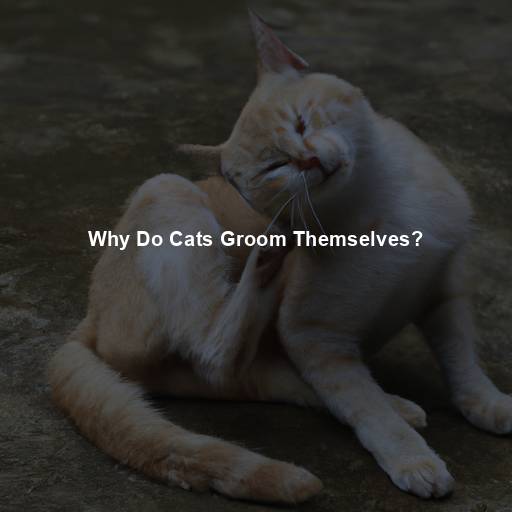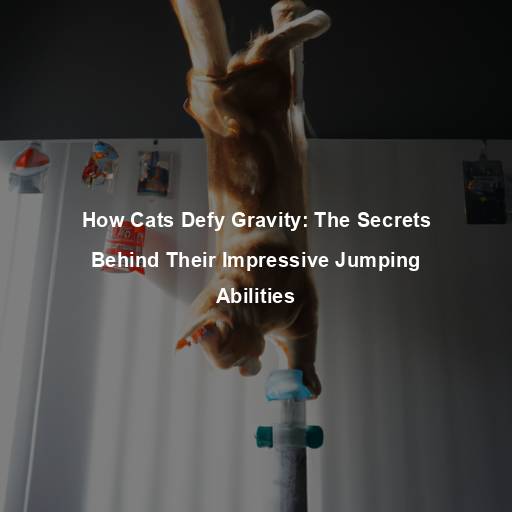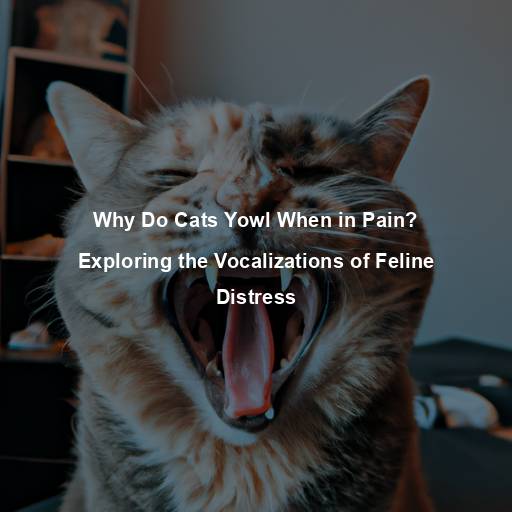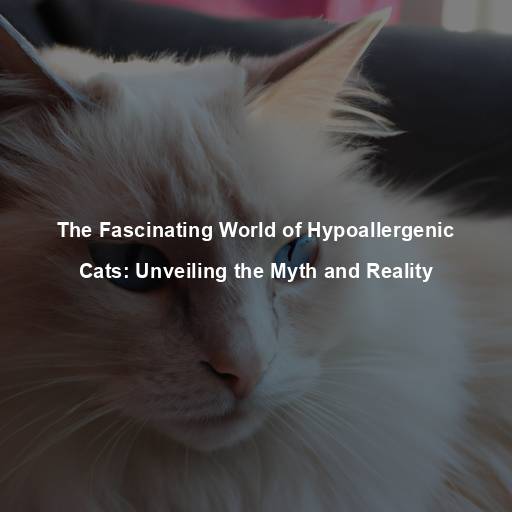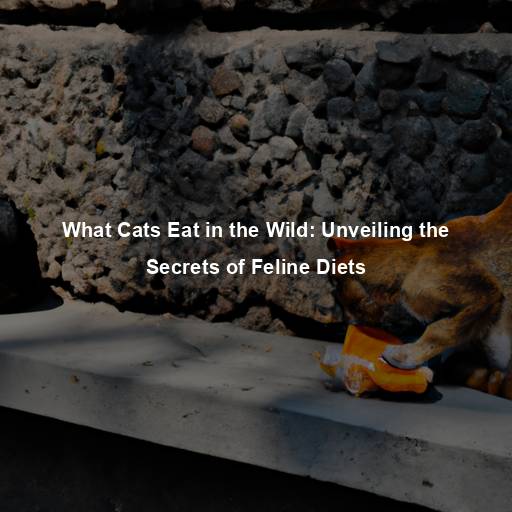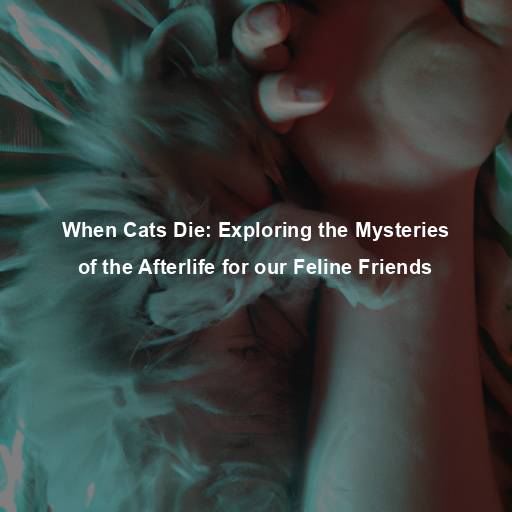Why Do Cats Groom Themselves?
Last Updated on July 10, 2023 by Evan
Contents
- 1 The Fascinating Behavior of Feline Self-Grooming
- 1.1 Understanding the Importance of Grooming for Cats
- 1.2 Instincts and Evolution: The Origins of Feline Grooming
- 1.3 Maintaining a Pristine Appearance: The Aesthetic Side of Grooming
- 1.4 A Therapeutic Ritual: Grooming as Self-Soothing
- 1.5 Bonding and Social Interaction: Grooming as a Social Behavior
- 1.6 Detecting Health Issues: Grooming as a Diagnostic Tool
- 1.7 The Dark Side of Excessive Grooming: Overgrooming and Compulsive Disorders
- 1.8 Understanding Cats Through Grooming
- 2 The Intricate Techniques of Feline Grooming
- 2.1 The Versatile Cat Tongue: A Remarkable Grooming Tool
- 2.2 The Art of Bristling: Licking and Biting for Optimal Grooming
- 2.3 The Elbow Lick: Reaching the Unreachable
- 2.4 The Art of Contortion: Stretching and Flexibility in Grooming
- 2.5 Grooming Rituals: From Personal Hygiene to Social Bonding
- 2.6 The Importance of Regular Brushing for Cats
- 2.7 The Beauty of Feline Grooming: A Window into a Cat’s World
- 2.8 Maintaining a Healthy Coat and Skin
- 2.9 Preventing Hairballs
- 2.10 Promoting Blood Circulation and Muscle Tone
- 2.11 Early Detection of Health Issues
- 2.12 Bonding and Trust Building
- 2.13 Reducing Stress and Anxiety
- 2.14 Promoting Dental Health
- 2.15 Enhancing Emotional Well-being
- 3 Establishing an Effective Grooming Routine
- 3.1 Start Early and Gradually Introduce Grooming
- 3.2 Create a Calm and Comfortable Environment
- 3.3 Use Positive Reinforcement and Treats
- 3.4 Start with Short Sessions and Gradually Increase Duration
- 3.5 Focus on Desensitization and Habituation
- 3.6 Be Gentle and Patient
- 3.7 Seek Professional Help if Needed
- 4 FAQs – Why do cats groom themselves?
The Fascinating Behavior of Feline Self-Grooming
Cats are known for their impeccable grooming habits. Spend a few minutes observing a feline friend, and you’ll witness their meticulous self-care routine. But have you ever wondered why cats groom themselves so diligently? From keeping their fur clean to maintaining social bonds, there are various reasons behind this instinctive behavior.
Understanding the Importance of Grooming for Cats
Cats are fascinating creatures when it comes to grooming – it’s like witnessing a mystifying ritual that combines practicality and sociability in their mysterious feline ways. Not only does grooming allow them to maintain their fur’s cleanliness, shielding them from unwanted debris and maintaining an ideal insulation, but it also serves an even more crucial purpose – no hairballs ruining their day! As they carefully lick away loose hair during this self-care routine, they effortlessly avoid those pesky digestive disruptions. And let’s not forget the magical benefits of grooming – it keeps their blood pumping, stimulates circulation, and generously spreads natural oils, making sure their coat and skin glow with health and vitality.
Instincts and Evolution: The Origins of Feline Grooming
Cats’ grooming behavior can be traced back to their wild ancestors. In the wild, grooming served as a survival mechanism, helping to remove scent traces that could attract predators. By licking themselves, cats not only cleaned their fur but also reduced their own scent, making them less detectable to potential threats. This instinctual behavior has been retained throughout domestication, even though the need for predator evasion has diminished.
Maintaining a Pristine Appearance: The Aesthetic Side of Grooming
Beyond practicality, cats also groom themselves to maintain their pristine appearance. Cats are inherently clean animals and take pride in their well-groomed appearance. Regular grooming ensures that their fur remains soft, untangled, and visually appealing. Cats are known for their fastidious nature, and grooming allows them to maintain their natural elegance and grace.
A Therapeutic Ritual: Grooming as Self-Soothing
Cats have always been notorious for their fastidious grooming habits, but did you know that it goes far beyond just staying clean? It’s like a spa day for them, but with a hint of zen. When our feline friends take matters into their own paws, a magical cascade of endorphins is released, whisking away their worries and whisking in a sense of calm. So, the next time your furry companion begins their grooming ritual, give them a knowing nod and let them bask in the blissful world of self-soothing.
Bonding and Social Interaction: Grooming as a Social Behavior
Grooming also plays a significant role in the social dynamics among cats. In multi-cat households or feral cat colonies, grooming serves as a form of social bonding. Cats engage in mutual grooming, known as allogrooming, where they groom each other as an expression of trust, affection, and social hierarchy. Through allogrooming, cats establish and reinforce social relationships, promoting a sense of belonging and camaraderie within their group.
Detecting Health Issues: Grooming as a Diagnostic Tool
Cats’ grooming behavior can also act as a diagnostic tool for their overall health. By meticulously grooming themselves, cats have an opportunity to detect any abnormalities or changes in their body. They may come across external parasites, skin irritations, lumps, or injuries during their grooming sessions. If a cat notices something unusual, they will often focus their attention on the affected area, indicating a potential health concern that requires veterinary attention.
The Dark Side of Excessive Grooming: Overgrooming and Compulsive Disorders
While grooming is a healthy and natural behavior for cats, excessive grooming can sometimes become a problem. Overgrooming, also known as psychogenic alopecia, occurs when cats groom themselves excessively to the point of causing hair loss or skin damage. This behavior is often associated with stress, anxiety, or underlying medical conditions. If you notice signs of overgrooming in your cat, it is essential to consult a veterinarian to identify and address the underlying cause.
Understanding Cats Through Grooming
Cats, with their enigmatic ways and mystifying behaviors, have a grooming ritual that goes far beyond just keeping themselves pristine. This ancient practice, deeply rooted in their feline essence, serves not only as a means to maintain their physical well-being but also as a way to strengthen their social connections and nurture their emotional equilibrium. By unraveling the secrets hidden within their meticulous grooming routines, we can unlock a deeper understanding of these captivating creatures and ensure that they lead lives filled with vitality and contentment.
Get ready to embark on a fascinating journey into the enigmatic realm of feline grooming rituals. In the upcoming sections, we shall uncover the mysteries surrounding the grooming styles of our beloved cats and unravel the captivating wonders of their velvety tongues. Prepare to be dazzled by the astonishing finesse and unparalleled expertise behind a cat’s grooming prowess. Brace yourself for a purr-fect exploration of the secret artistry that goes into maintaining a cat’s impeccable appearance.
The Intricate Techniques of Feline Grooming
Cats possess an unparalleled prowess in the art of self-care, their grooming techniques presenting an enigmatic marvel to behold. With tongues bearing a unique rough texture and movements marked by graceful precision, feline grooming routines become a captivating spectacle. Prepare to be astounded as we unravel the intricacies of their meticulous self-care rituals, shedding light on the captivating mechanics that underlie their grooming prowess.
The Versatile Cat Tongue: A Remarkable Grooming Tool
At the heart of a cat’s grooming abilities lies their unique tongue. The surface of a cat’s tongue is covered in tiny, backward-facing barbs called papillae. These barbs serve multiple purposes during grooming. Firstly, they act as a comb, helping to remove loose hair and debris from the fur.
The Art of Bristling: Licking and Biting for Optimal Grooming
It’s no secret that cats are absolute masters of self-maintenance. Their grooming techniques are a mesmerizing mix of licking and biting, which may leave us humans feeling a bit puzzled. But fear not, this double-pronged approach actually serves a purpose! Licking takes center stage, allowing cats to give their fur a thorough dampening with their saliva, a miraculous natural cleanser.
The Elbow Lick: Reaching the Unreachable
It is truly captivating how cats go about their meticulous grooming rituals, revealing a hidden technique known as the elbow lick. Cats possess a remarkable flexibility in their neck and spine, enabling them to access nearly any part of their body with their agile tongues. Yet, when it comes to those hard-to-reach spots like the head, neck, and ears, cats must employ a fascinating strategy. Enter the elbow lick technique: by skillfully licking their front paws and then utilizing them to groom these elusive areas, cats ensure a thorough and impeccable grooming session.
The Art of Contortion: Stretching and Flexibility in Grooming
When it comes to grooming, cats are the ultimate masters of flexibility. Their bodies possess an astonishing range of motion that defies logic and leaves us in awe. With a single twist, turn, or contortion, they can reach the most inaccessible corners of their fur, defying the limits of our understanding. It’s truly perplexing how their supple joints and agile spines allow them to effortlessly maintain a flawless and thorough grooming routine, ensuring no area goes untouched or unruly.
Grooming Rituals: From Personal Hygiene to Social Bonding
In the intriguing world of feline grooming, one may assume that this ritual is purely a solitary affair. However, prepare to be astonished, as recent studies have unveiled a captivating twist in the feline social dynamics. Behold, the mysterious phenomenon known as “allogrooming,” where our enigmatic cats come together, setting aside their independent nature, to engage in a profoundly perplexing display of trust and affection. This mesmerizing bonding ritual involves a peculiar adaptation of their usual grooming technique, ensuring that each cat can effectively reciprocate the favor and uphold the collective cleanliness and overall well-being of the exclusive feline community.
The Importance of Regular Brushing for Cats
Cats, those enigmatic creatures of feline finesse, may have a mysterious knack for self-grooming, but, oh dear humans, they do indeed yearn for a touch of your grooming grace. The artistry of a regular brushing ritual bestows upon your whiskered companion a gift: the removal of unruly, errant hairs, the prevention of mats, and the easing of those dreaded hairball blues. The brush becomes your curious detective’s lens, inviting you to embark on a coat exploration, a clandestine mission to unveil covert skin issues, parasites, or puzzling abnormalities. Ponder not, dear reader, for guidance lies in the wise words of veterinarians and diligent groomers, who will be your compass in the labyrinth of grooming tools and bewildering techniques, adept at tailoring their expertise to your individual cat’s unique needs.
The Beauty of Feline Grooming: A Window into a Cat’s World
The grooming rituals of our feline companions never fail to leave us in a state of awe. The way they effortlessly use their tongues, with a design so ingeniously intricate, is absolutely perplexing. It is through these meticulously executed self-grooming acts that cats unveil their true sophistication and adaptability. So, the next time you catch your cat engaging in a grooming session, prepare to be captivated by the burst of complexity and beauty that unfolds before your eyes.
Intrigued to learn more about the perks of grooming for our beloved feline friends? Brace yourself, as we dive into the depths of this captivating subject, unraveling the enigmatic connection between grooming and the overall well-being of cats. Get ready to be enlightened about the profound impact grooming has on our furry companions, both inside and out. Are you prepared to embark on a journey that promises to unveil the hidden mysteries of a happier and healthier feline existence?
Taking care of your cat’s grooming needs goes beyond simply keeping their fur neat and tidy. It is an essential part of their holistic care, providing numerous rewards that enhance their overall quality of life. From maintaining a lustrous coat that radiates health to fostering a deeper sense of connection between felines and their human counterparts, grooming is a multifaceted practice that brings a panoply of benefits to our beloved furry companions. In this in-depth segment, we will delve into the myriad advantages that grooming provides for our whiskered friends, unravelling the captivating tapestry of advantages that intertwine in their feline world.
Maintaining a Healthy Coat and Skin
Regular grooming helps cats maintain a healthy coat and skin. Brushing removes loose hair and prevents matting, which can lead to discomfort and skin irritation. It also enables better air circulation around the skin, reducing the risk of fungal or bacterial infections. Additionally, grooming stimulates the production of natural oils, which moisturize the skin and keep the coat soft, shiny, and free from dryness.
Preventing Hairballs
As cat lovers, we know that our feline friends are experts at grooming, but it’s no secret that their self-care routine can sometimes lead to a hairy situation – hairballs. These pesky little bundles of fluff may seem harmless at first, but they can cause a world of discomfort for our furry companions. From digestive troubles to potential blockages, hairballs are definitely a perplexing predicament. Fortunately, there are steps we can take to minimize this burst of hair havoc.
Promoting Blood Circulation and Muscle Tone
There’s something captivating about watching cats engage in their meticulous grooming rituals. As their tongues gracefully dance across their fur, a burst of perplexity arises. Little do we know, this curious behavior actually serves a greater purpose, as it sets a symphony of physiological responses in motion. In this intricate dance, blood circulation becomes a star performer, delivering vital oxygen and nourishment to their muscles, so their feline physiques can boast remarkable tone and fitness.
Early Detection of Health Issues
Grooming provides an opportunity for cat owners to closely examine their feline companion’s body and detect any signs of health issues or abnormalities. During grooming sessions, pay attention to your cat’s skin condition, looking out for any redness, bumps, lesions, or signs of parasites. Also, check for any changes in their coat, such as excessive shedding, bald patches, or abnormal texture. If you notice anything unusual, consult your veterinarian for a thorough examination.
Bonding and Trust Building
Cats and their human companions often find a peculiar connection in the art of grooming. The act of regularly caring for your feline friend can weave a tapestry of trust and camaraderie, binding you both in a perplexing bond. The mesmerizing sensation of being groomed is a delight for many cats, as they interpret it as a loving gesture from their human counterpart. It is during these intimate grooming sessions that you have the golden opportunity to cherish precious moments with your cat, showering them with undivided attention, tender caresses, and a harmonious atmosphere.
Reducing Stress and Anxiety
Cats, those enigmatic creatures that walk among us, have a secret to share. A gentle stroke here, a delicate brush there, and voila! The magic of grooming unfolds. In the midst of their elusive aura lies a calming power that banishes stress and anxiety, leaving them with a tranquil serenity.
Promoting Dental Health
While grooming primarily focuses on the coat and skin, it also indirectly contributes to a cat’s dental health. Cats groom themselves using their tongues, and during this process, they may inadvertently remove food particles or plaque from their teeth. However, it is essential to note that grooming alone is not sufficient for maintaining optimal dental hygiene. Regular toothbrushing and dental check-ups are still necessary to prevent dental issues in cats.
Enhancing Emotional Well-being
Grooming plays a vital role in a cat’s emotional well-being. It provides them with a sense of control, allowing them to engage in a behavior that comes naturally to them. Regular grooming sessions can help cats feel more secure, satisfied, and content in their environment. Additionally, grooming promotes relaxation and reduces boredom, as cats often find the process enjoyable and stimulating.
Discover the enigmatic world of feline grooming, where much more than just vanity lies beneath the surface. Unveiling a realm of intertwined physical and emotional care, cats engage in a ritualistic dance that transcends the mundane. Liberate yourself in the quest for the perfect grooming routine, one that caters to the idiosyncrasies of your mysterious feline companion, untangling a web of satisfaction and fulfillment for both of you.
In the next section, we will provide practical tips and guidelines to help you establish an effective grooming routine for your cat. Stay tuned to discover how you can make grooming a pleasant and beneficial experience for your feline companion.
Establishing an Effective Grooming Routine
There’s no denying that a successful grooming routine necessitates a delicate balance of patience, understanding, and a gentle touch. After all, every feline friend possesses their own set of unique preferences when it comes to their tresses. So, to embark upon a grooming journey that truly works for both you and your four-legged companion, allow me to share some invaluable tips and guidelines to keep you on the right track.
Start Early and Gradually Introduce Grooming
It is best to introduce grooming to your cat at a young age. Kittens are more receptive to new experiences and can adapt to grooming routines more easily. Start by gently stroking your kitten’s fur and gradually introduce a brush or comb. Make sure to use a brush suitable for your cat’s coat type, as different breeds have different grooming needs.
Create a Calm and Comfortable Environment
Creating a serene and tranquil setting is crucial when it comes to pampering your feline friend. Kitties, with their delicate nature, yearn for an environment that induces a sense of calmness during grooming rituals. One can achieve this by opting for a mellow ambiance, be it by dimming the lights, playing some soul-soothing melodies, or even spritzing some pheromone magic in the air.
Use Positive Reinforcement and Treats
Building a bond with your feline friend during grooming time is of utmost importance, as positive reinforcement is the ultimate secret to a purr-fect grooming experience. By showering your cat with delightful treats, heartfelt praise, and gentle caresses throughout and after each pampering session, you create a harmonious connection between grooming and joyful moments. This positive association imbues future grooming sessions with an air of delight, ensuring a blissful and enjoyable experience for both you and your beloved pet.
Start with Short Sessions and Gradually Increase Duration
When starting a grooming routine, begin with short grooming sessions of just a few minutes. As your cat becomes more comfortable, gradually increase the duration of the sessions. It is important to respect your cat’s limits and never force them to endure grooming for extended periods if they show signs of stress or discomfort.
Focus on Desensitization and Habituation
Discover the secrets to transforming your feline friend into a grooming aficionado! Unlock the power of desensitization and habituation techniques, enabling your cat to conquer their grooming anxieties. Embrace a gradual approach by introducing the mysterious grooming tools and equipment, fostering a curious exploration tailored to your cat’s individual pace. Ignite a wave of positivity by rewarding and reinforcing these gentle encounters, forging a delightful association that will leave your cat purring with contentment.
Be Gentle and Patient
Gentleness and patience are crucial during grooming sessions. Use slow and deliberate movements, avoiding any sudden or forceful actions that may startle or distress your cat. Regular breaks during grooming sessions can help your cat relax and prevent them from becoming overwhelmed.
Seek Professional Help if Needed
Grooming can sometimes feel like a perplexing task, especially if your feline friend is not exactly cooperative or seems overwhelmed by the process. That’s when it might be beneficial to enlist the help of a skilled groomer or a knowledgeable veterinarian. These experts possess a wealth of experience and can offer invaluable tips and tricks to transform grooming into a blissful and anxiety-free affair for your beloved kitty.
By following these guidelines and customizing your approach to suit your cat’s specific needs, you can establish a grooming routine that both you and your feline companion can enjoy. Grooming not only benefits your cat’s physical health but also strengthens the bond between you and your furry friend.
As we delve into the upcoming section, prepare to embark on an intriguing journey through the realm of grooming quandaries. Brace yourself for a diverse array of challenges that may leave you feeling perplexed. However, fear not, for we are here to shed light on these conundrums and offer invaluable insights on how to triumphantly navigate the murky waters of feline grooming. Stay tuned and unlock a treasure trove of knowledge to conquer any grooming-related tribulations that may come your way.
FAQs – Why do cats groom themselves?
Why do cats spend so much time grooming themselves?
Cats, those enigmatic creatures of the feline world, are notorious for their undeniably methodical grooming practices. It is a ritual that they engage in, sometimes for hours on end, without an ounce of fatigue or boredom. This meticulous act serves a multitude of purposes, all of which contribute to their overall well-being. Firstly, and undoubtedly quite astonishingly, their grooming habits maintain an impeccable level of hygiene, ensuring that no speck of dirt, debris, or excessive oil dares to tarnish their luxurious fur. This fastidiousness not only leaves them looking prim and proper but also aids in regulating their body temperature, a feat only the finest of feline minds could achieve. Moreover, the art of grooming acts as a catalyst in stimulating the production and distribution of natural oils found on their skin, elevating their coats to a state of eternal luminosity – a shimmering testament to their vitality. Yet, there is a profound dimension to grooming that transcends the physical aspect; it holds the power to bring solace to their restless souls, evoking a comforting sense of relaxation. In this mesmerizing act of self-care, the release of stress and anxiety becomes inevitable, as their bodies blissfully embrace the surge of endorphins, whisking away their worries into the abyss. Such is the enigmatic nature of these captivating creatures, feline wonders forever entwined with the secrets of grooming.
How do cats groom themselves?
There is something undeniably fascinating about cats and their grooming rituals. With their tongues adorned in what can only be described as miniature hooks, known as papillae, these majestic creatures have mastered the art of trapping loose fur, dirt, and even the occasional unwanted parasite. From head to tail, they diligently lick themselves, not hesitating to employ their trusty teeth to conquer the unfathomable challenge of disobedient mats and pesky tangles. Astonishingly flexible, cats effortlessly contort their bodies, ensuring no part goes ungroomed, while simultaneouly using these intimate grooming sessions as a means of strengthening social bonds and asserting their shared identity within their furry clan.
Within the feline realm, a curious and intricate dance unfolds in the form of grooming. Like an elusive riddle, its purpose shifts beyond the mere practicality, diving into the depths of social intricacies that bind these enigmatic creatures. In the company of their kindred spirits, cats engage in mutual grooming, an enchanting ritual that paints strokes of trust, warmth, and camaraderie on the canvas of their existence. Through this delicate act, these mysterious beings affirm their bonds and forge an intimate tapestry of familiarity within their cherished circle.
Is excessive grooming a cause for concern?
Cats, known for their intrinsic cleanliness, often engage in attentive grooming habits. However, when grooming reaches excessive levels, it may ignite a perplexing worry. This peculiar behavior might serve as an enigmatic signal for underlying medical or behavioral complications. If your feline companion displays an obsessive grooming routine, leading to hairless patches, irritated skin, or incessant licking/chewing of their fur, it would be wise to seek guidance from a veterinarian. Unveiling potential catalysts such as allergies, parasites, stress, anxiety, or latent medical afflictions is pivotal before delving into the enigma of excessive grooming.

